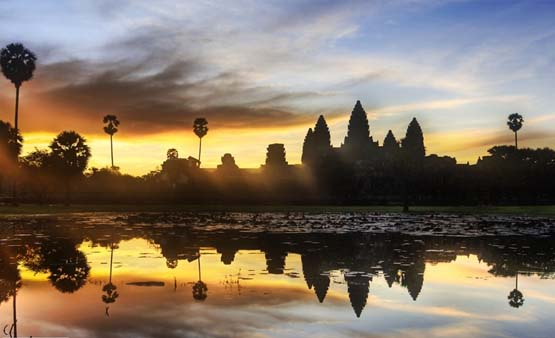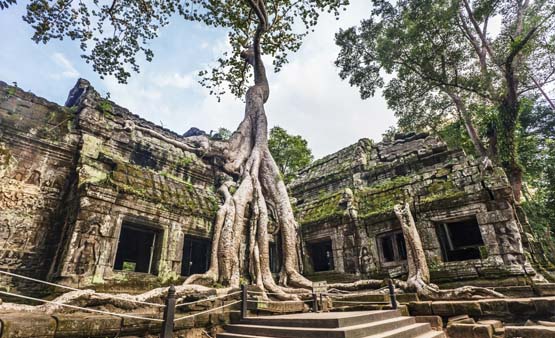Preah Khan (Constructed: Late 12th century, King/Patron: Jayavarman VII, Religion: Buddhist). Preah Khan is a huge, highly explorable monastic complex. It originally served as a Buddhist monastery and school, engaging over 1,000 monks. For a short period it was also the residence of King Jayavarman VII during the reconstruction of his permanent home in Angkor Thom. Preah Khan means “sacred sword.” In harmony with the architecturally similar Ta Prohm, which was dedicated to Jayavarman VII’s mother, Preah Khan is dedicated to his father. Features of note: like most of Jayavarman VII’s monuments, the Buddha images were vandalized in the later Hindu resurgence. Some Buddha carvings in the central corridor have been crudely carved over with Bodhisattvas, and in a couple of odd cases, a lotus flower and a linga. Also note the cylindrical columns on the building west of the main temple.








